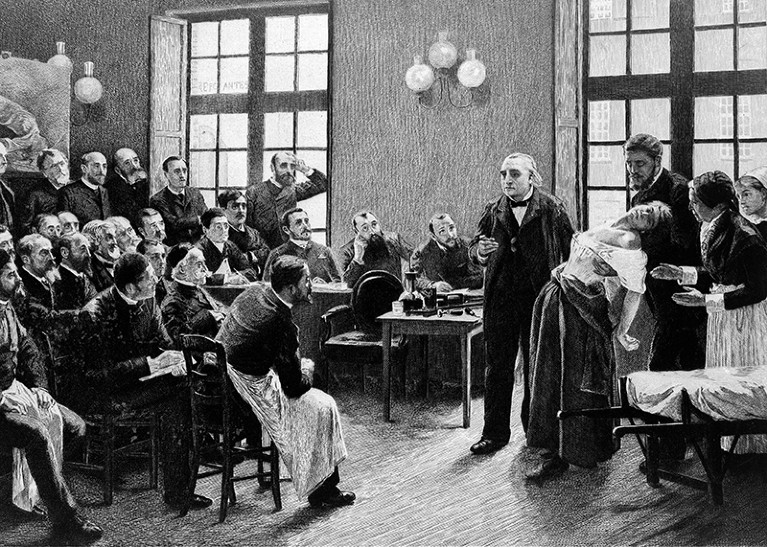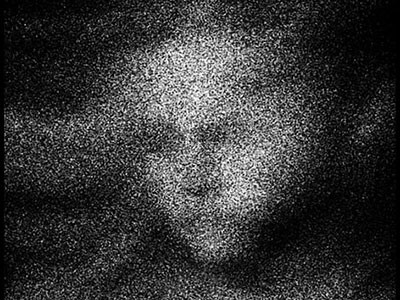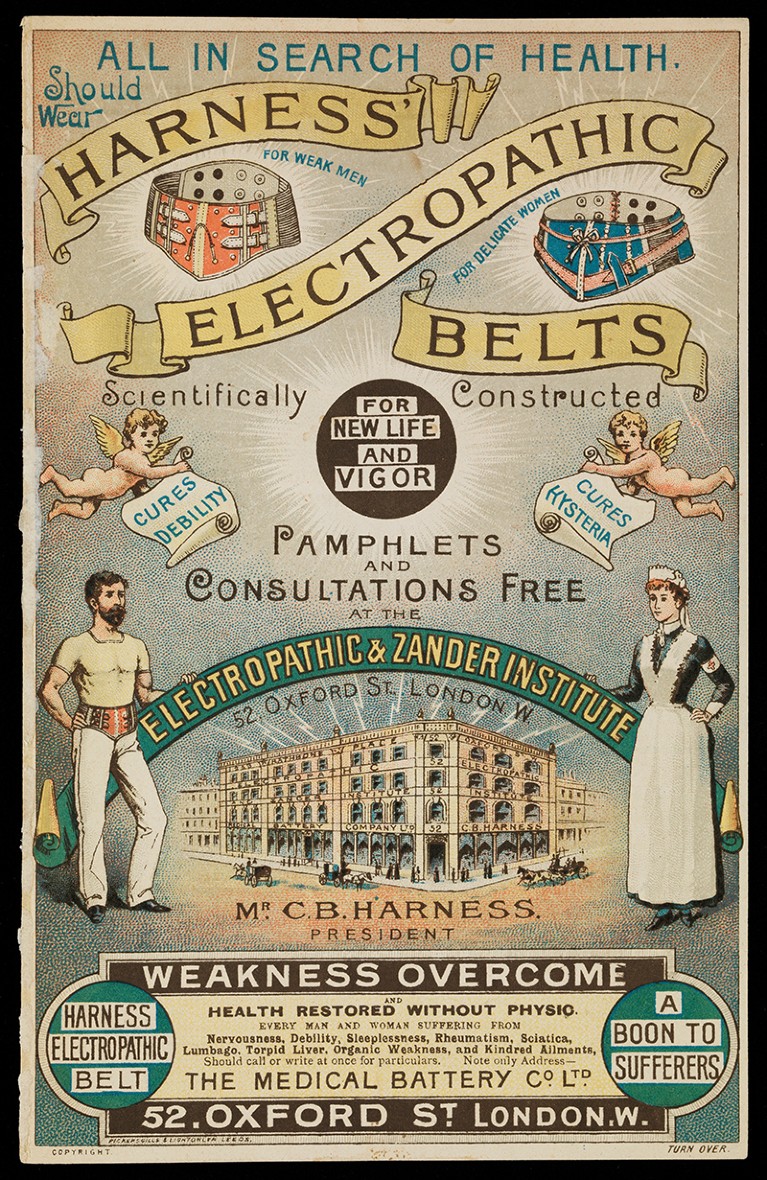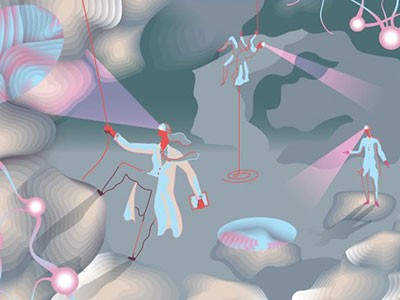
Nineteenth-century neurologist Jean-Martin Charcot (fourth from right) discusses a patient diagnosed with hysteria at the Pitié-Salpêtrière Hospital in Paris.Credit: Pierre André A. Brouillet/Wellcome Collection (CC BY 4.0)
How the Brain Lost its Mind: Sex, Hysteria, and the Riddle of Mental Illness Allan H. Ropper and Brian Burrell Penguin (2019)
Neurology and psychiatry both struggle to engage with disorders that elude neat classification. Neurologists deal with well-characterized biological conditions such as Huntington’s disease. But they also treat ‘in-between’ disorders such as Tourette’s syndrome (characterized by involuntary vocalizations or movements), and see people with physical symptoms that are ultimately revealed as strictly psychological. Most psychiatrists, for their part, work with the conviction that all mental illness has a biological basis. Yet they insist that the content of mental suffering matters, and that their task is to heal minds, not just fix brains.
These disciplines might seem to have a great deal to say to one another. Instead, they labour mostly in isolation. How did that happen, and what are the consequences? In their thoughtful and engaging book, How the Brain Lost its Mind, neurologist Allan Ropper and writer–mathematician Brian Burrell tackle that question in an original way: by exploring two medical histories that are generally told separately.
The biological basis of mental illness
One concerns neurosyphilis, a late-stage form of the sexually transmitted disease syphilis. The other centres on hysteria, a disorder in which psychological stresses are expressed through a range of physical symptoms.
In the nineteenth century, neurosyphilis was one of the most ubiquitous and fatal forms of degenerative mental illness known to psychiatry. Termed general paralysis of the insane, it was widely supposed by early practitioners to be caused by bad heredity, ‘weak character’ or moral turpitude. That changed in 1913, when Japanese bacteriologist Hideyo Noguchi, working at Rockefeller University in New York City, found traces of Treponema pallidum — the spiral-shaped bacterium responsible for syphilis — in the brains of deceased people with general paralysis. At the time, as many as one-third of patients in mental hospitals had symptoms that could now be clearly traced back to syphilis (A. M. Brandt Science 239, 375–380; 1988).
Hysteria, originally thought to be a gynaecological condition affecting only women, was recast as neurological in part through the efforts of distinguished nineteenth-century French neurologist Jean-Martin Charcot. The symptoms he saw in his patients — partial paralysis, convulsions, vision problems and tics — certainly looked neurological. By the final years of the century, however, critics of Charcot and even some of his former loyal students (including Joseph Babinski, who discovered the ‘Babinski reflex’ in infants) had concluded that the condition was a kind of fraud — a psychological disorder masquerading as a neurological one. Babinski even proposed that neurology abandon the term hysteria altogether and replace it with the term ‘pithiatism’: a condition produced through persuasive suggestion and eliminated in the same way. As the authors note, hysteria turned out to be “a profound mind problem that makes the sufferer act as if he or she were diseased”. Neurosyphilis, meanwhile, was a “brain disease that can produce a simulacrum of mental illness”.

An 1890 advertisement for ‘electropathic belts’ that claimed to cure various conditions from nervousness to rheumatism, but which actually produced no sensation whatsoever.Credit: Wellcome Collection (CC BY 4.0)
According to How the Brain Lost its Mind, the unmasking of hysteria as psychological gave us Sigmund Freud and his new field of psychoanalysis. It also led, eventually, to the post-war neo-Freudian conceit that problematic behaviours with no associated disease should nevertheless be treated as medical. But while psychological understanding of hysteria transformed psychiatry, neurologists still struggled to help patients with symptoms that a previous generation would have called hysterical. As many as 30% of the cases seen in neurology departments elude organic explanation even today, the authors tell us. And the field does not seem much better equipped to make sense of such cases than it was in Charcot’s time.
Meanwhile, the discovery that general paralysis was a symptom of a sexually transmitted disease galvanized subsequent generations of psychiatrists. They embarked on a quest, still largely unfulfilled, to find biological foundations for other mental disorders, especially grave conditions such as schizophrenia. Only later would it become clear, as the authors point out, that neurosyphilis is “an unsuitable model for anything clearly unrelated to infection or inflammation in the frontal and temporal lobe regions”.
Although the histories of these two conditions are normally seen as separate, Ropper and Burrell make clear that they interacted in a range of ways. Early on, both conditions were widely recognized as tricksters or “imitators” of other maladies, including each other. Some cases of syphilis were almost certainly misdiagnosed as hysteria, and vice versa. But even more significantly, sex — and profound anxieties about it — had a deep role in patients’ experience of both disorders.
Ropper and Burrell suggest that this was no coincidence. The age of Freud was also the age of syphilis. Freud, and psychoanalysis more generally, focused on suppressed sexual fantasies and traumas because, for patients then, the shameful and terrifying spectre of syphilis hung over every sexual encounter like “the sword of Damocles” .
Ultimately, the authors insist, these tangled tales left behind a two-fold legacy. The history of neurosyphilis bequeathed a tendency to indulge in excessive reductionism. That of hysteria encouraged a tendency to indulge in excessive psychologism. And both psychiatry and neurology were left the poorer. As the authors argue, the majority of patients seen by practitioners in both fields are afflicted with what they call “in-between states” — forms of distress informed by both biology and biography. The book is in this sense a plea for neurology and psychiatry to repair ruptures, join forces and do justice to the experiences of their patients.
How the Brain Lost its Mind offers a historical narrative that is mostly nuanced and often moving. Particularly notable is its focus on patient experience, and how people with syphilis talked about their suffering. There are occasional slips into historical clichés that are inaccurate. At one point, the authors claim that people with mental illnesses were “assumed to be possessed by evil spirits” right into the nineteenth century, “when medical science chased away the spirits”. In fact, medical understandings of mental disorders routinely coexisted with religious, moral and supernatural ones as early as the sixteenth century. (Medical theories in that era drew on humoral theory, which attributed both physical and mental illnesses to imbalances in the four bodily ‘humours’.)
Ropper and Burrell are powerfully focused on giving neurosyphilis its due as psychiatry’s original “calling card, the core of its legitimacy”, and rightfully so. I did feel, however, that they were sometimes tempted to overstate its importance in the birth of biological thinking in psychiatry. Neurosyphilis mattered, but there were other intellectual factors and forces — anatomical research, reflex physiology, evolutionary theory, toxicology and biochemistry — that drove psychiatry’s biological hopes over the years as well.
These small points aside, How the Brain Lost its Mind is a rich, compassionate and passionate book that deserves a wide audience. Sceptical of the excesses of both psychological and biological reductionism, it is a refreshing call for an intellectual reset and disciplinary rapprochement. I hope it inspires much-needed cross-disciplinary debates and conversations.


 The sorrows of psychiatry
The sorrows of psychiatry
 The biological basis of mental illness
The biological basis of mental illness
 A very sad story
A very sad story






